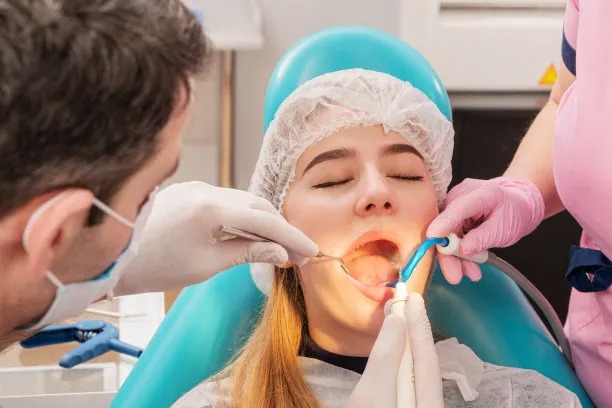Navigating Dental Health Essential Steps and Considerations for Extracting a Tooth Safely and Effectively
Summary: Tooth extraction can be a crucial procedure for maintaining dental health, especially when dealing with decay, crowding, or damage. This article delves into the essential steps and considerations vital for safely and effectively navigating the tooth extraction process. It covers the pre-extraction assessment, the process of extraction itself, aftercare, and when to consult a dentist. By adhering to these guidelines, individuals can ensure a smoother experience during and after the extraction of a tooth, minimizing discomfort and promoting better healing outcomes.
1. Pre-Extraction Assessment: What to Know

Before proceeding with a tooth extraction, an in-depth assessment is vital. This includes a comprehensive examination to evaluate the extent of the dental issue and to understand the overall health of the patient. Dentists typically perform X-rays to visualize the structure of the teeth and surrounding bone, which aids in planning the procedure.
Medical history is another crucial aspect of the pre-extraction phase. Patients should inform their dentists about any medications they are currently taking, existing health conditions, and previous dental experiences. This information helps mitigate potential risks during extraction, ensuring that the process is both safe and effective.
In some cases, pre-medications may be required to minimize anxiety or alleviate pain before the extraction. Dentists often discuss sedation options, especially for patients who may be particularly nervous about the procedure. Understanding these choices can enhance the overall experience and comfort level of the patient.
2. The Tooth Extraction Process Explained
The actual extraction process begins once the patient is fully prepared, discussing the anesthesia options available. Local anesthesia is commonly used for simpler extractions, while sedation or general anesthesia might be necessary for more complex cases, such as impacted teeth.
During the extraction, the dentist carefully loosens the tooth using specialized instruments. Once the tooth is adequately loosened, it is removed from its socket. The duration and difficulty of the procedure can vary depending on the condition of the tooth and its root structure.
After the tooth has been extracted, the dentist may place gauze over the site to control bleeding. Patients are typically given specific post-operative instructions to follow, including how to manage any pain or swelling that may arise after the procedure. Clear communication during this stage is essential for ensuring a successful extraction.
3. Post-Extraction Care for Optimal Healing
Post-extraction care is critical for promoting healing and preventing complications. After the procedure, patients should bite down gently on gauze for several hours to help control bleeding. Swelling is common, and applying an ice pack to the outside of the face can help reduce discomfort and inflammation.
Patients should also pay attention to their diet following the extraction. Soft foods are recommended in the first few days to avoid irritating the extraction site. Hydration is equally important, but straws should be avoided, as sucking can dislodge the blood clot formed in the socket.
Monitoring for signs of infection is necessary during the recovery period. Symptoms such as increased pain, swelling, or fever may indicate complications requiring immediate dental attention. Regular follow-ups with the dentist can help ensure that the healing process is on track and that any concerns are promptly addressed.
4. When to Consult a Dentist Again
Even with proper care, patients should be aware of the signs that warrant a return visit to the dentist. Prolonged pain, difficulty in opening the mouth, or persistent swelling can signal a problem that needs professional evaluation.
Additionally, if patients experience discomfort that significantly worsens after the first few days post-extraction, they should contact their dentist. Sometimes, conditions like dry socket can occur, where the blood clot fails to form properly, leading to intense pain.
Regular dental check-ups following tooth extraction are essential. Maintaining communication with the dentist about any unusual symptoms or concerns ensures that any potential issues are treated early, thereby promoting better overall dental health.
Summary:
Tooth extraction requires careful planning and execution. Through a thorough assessment, a well-understood extraction process, diligent post-care, and awareness of when to consult a dentist again, patients can successfully navigate this essential dental procedure.
This article is compiled by Vickong Dental and the content is for reference only



